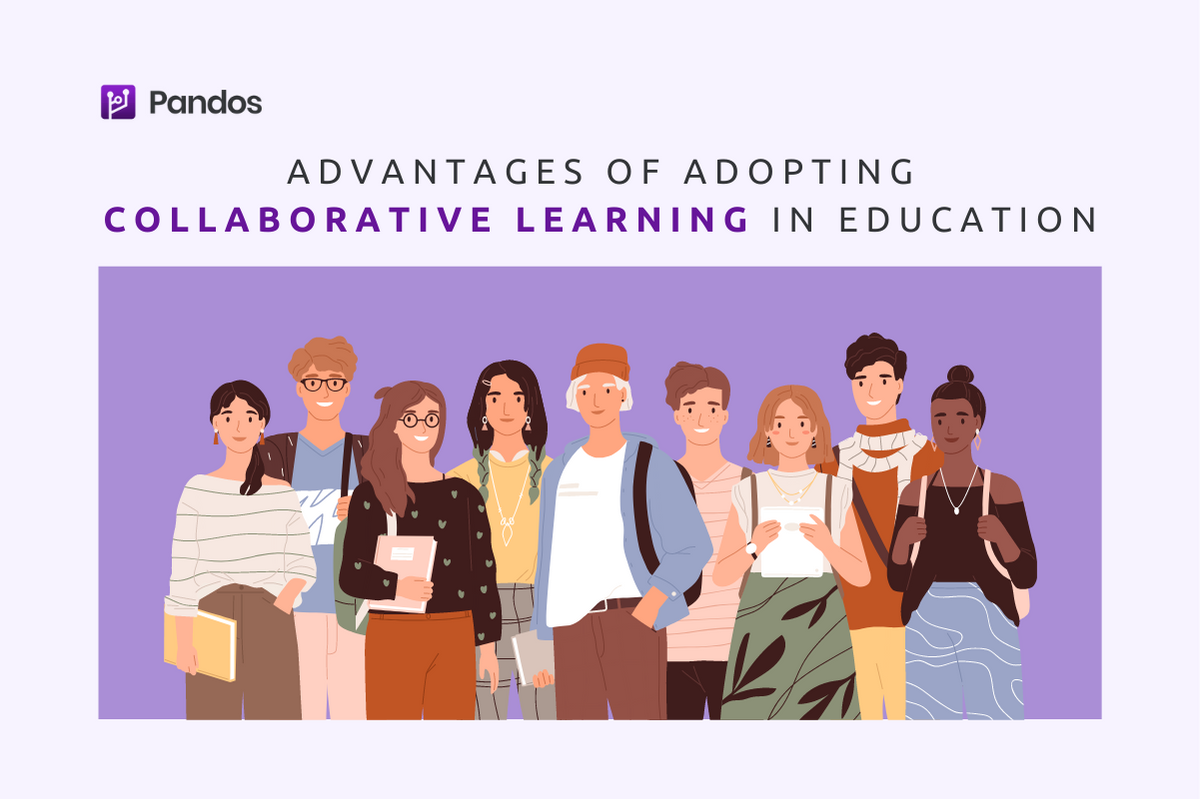Collaborative Learning in Class
Ever since educators found out the importance of learning in groups, they have been researching numerous learning methods. And so, one of the most famous concepts that is usually discussed is collaborative learning.
Before jumping to understand what collaborative learning is and what are the benefits of adopting this, there is a similar learning method that educators have been comparing which is “cooperative learning“. In fact, these two definitions might have the same meaning as working in a group to achieve learning goals. And yet, there are still differences between these two terms:
- In collaborative learning, members work together in order to achieve the team’s goals. This learning method also focuses on the skills and contribution of all members ever since the group is formed.
- Same with collaborative learning in achieving team’s goals, but cooperative learning especially focuses on team’s result more than individual’s result.
Now that we have a basic understanding of these two methods, we will move on to the specifics of collaborative learning and be right back at how they differ in the following section.
Definition of Collaborative Learning
Collaborative learning came from Lev Vygotsky’s concept of learning called “The zone of proximal development”.
“The zone of proximal development” from Lev Vygotsky’s
Vygotsky declared the importance of learning through communication and interactions with others rather than just through independent work. With this definition, it has opened a gate to other types of group work, and one of the famous ones is collaborative learning.
Since collaborative learning appeared, many scholars have been researching diverse sides of it which has also led to diverse definitions. Some famous descriptions of this learning method are:
- Collaborative learning is a teaching strategy in which learners work together in small groups helping maximize learning and gaining higher results.
- Collaborative learning includes all kinds of activities that students work with within the group, and within/without the classroom.
- Collaborative learning is a structural learning strategy. It has systematic instruction, and it works in small groups to achieve common goals.
- Collaborative learning is a group learning activity that is organized depending on the engagement of information, socially structured among learners in groups. With this definition, each learner must take responsibility for their own learning, and they are encouraged to support other members simultaneously.
- Collaborative learning is a teaching model/pattern in which groups of learners work on structured tasks (e.g. homework, Lab experiments, design projects…) with the following conditions: active dependence, self-responsibility, face-to-face interaction, appropriate use of collaboration skills, regular group self-assessment. Many studies have shown that when this learning method is adapted correctly, it can enhance the ability to acquire and to store information. Furthermore, it can help learners to get soft skills like high-level thinking, communication, interpersonal, or self-confidence…”
- Collaborative learning is mentioned as a method to an instructional organization that helps groups of 2-6 students work together on finding their mutual goal. Also, collaborative learning groups gather people that can share their work, knowledge, presentation, etc.
Though there are many definitions, we can view collaborative learning in a large picture which is the model below:
Model of collaborative learning
Generally, collaborative learning is a positive strategy for teaching and learning that helps students engage in activities, learn together in small groups (each group includes various skills and abilities members) in order to enhance knowledge and obtain any learning content.
Differences between Collaborative Learning and Cooperative Learning
As previously stated, collaborative learning and cooperative learning can be misunderstood as the same learning method. Though both models are similar by using a division of labor, they still have some differences:
Different roles:
- Collaborative learning requires a mutual engagement of all participants and a coordinated effort to solve the problem.
- In contrast, cooperative learning needs individuals to take responsibility for a specific section and then coordinate their respective parts together.
Different participants:
- Collaborative learning applies to college and university students since it is suitable to teach non-foundations learning.
- Cooperative learning is used more often for children because it is used to understand the foundations of knowledge.
In contrast, many remarkable psychologists like Johnson & Johnson, Slavin, or Cooper believed that both cooperative learning and collaborative learning are the same methods by using mechanisms for learners to obtain a set of skills or knowledge.
Advantages of Collaborative Learning in Education
Top 3 essential advantages of adopting collaborative learning in education
Collaborative learning is a common learning technique in developed countries and it brings many benefits for education generally. In the process of group work that uses a model of collaboration, members can find their own benefits and achieve team goals at the same time. They work on motivating each other’s results and finding their own ways to solve problems while learning. In fact, students in collaborative groups are likely to be more active and gain better outcomes than students that work individually. There are three essential advantages that learners and educators should know about collaborative learning:
It creates a positive mindset and collaboration spirit.
– Create conditions for all students to have the opportunity to participate in many learning activities in the classroom.
– Students are given the maximum conditions to promote their initiative, creativity, and develop thinking capacity.
– Instead of just learning from the teacher, students also learn from friends, from textbooks.
– Cultivate the spirit of cooperation among students in class, at the same time, strengthen individual responsibility in groups, and practice the habit of listening to the opinions of others.
– Train students to express themselves and increase their confidence.
It directly affects attitude, viewpoint, and social relationships.
Students, for example, have the opportunity to hear more points of view, see problems from multiple perspectives, or get ideas from each member when discussing in a group.
It is high adaptability where students can promote their positive sides.
– Promote the learning process and create high efficiency when learners participate in discussion groups.
– Increase learners’ active thinking, creativity, and memorization in the learning process.
– Increase interest in learning for learners.
– Help learners develop language communication skills.
– Improve students’ self-esteem and confidence.
– Help foster positive competitive relationships in learning.
So far, collaborative learning has been accessible to education from many parts of the world, helping both educators and learners work in groups much better than before. From traditional classes to online classes, this learning method can be adapted in a diverse way and become a popular strategy for group work. For the next discussion, we will take a closer look at what are characteristics when learners join collaborative groups and what are good tools that work best with collaborative learning.
References:
Son. B.N. & Hien. N.T. (2009). Hoc tap cong tac [Collaborative learning]. Retrieved from: academia.edu






